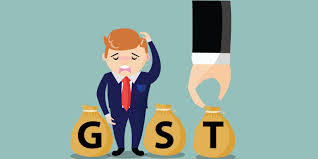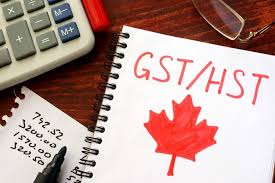 When your business income exceeds $30,000, you are required to register for GST (although some businesses are required before that like taxis and ride-sharing drivers). With that, comes the responsibility of charging GST on all goods and services sold by your business and filing an additional tax return – the GST Return.
When your business income exceeds $30,000, you are required to register for GST (although some businesses are required before that like taxis and ride-sharing drivers). With that, comes the responsibility of charging GST on all goods and services sold by your business and filing an additional tax return – the GST Return.
Here are the 3 methods that can be used to calculate your GST obligations.
NORMAL
The normal method for GST is subtracting the amount you paid on purchases (aka ITCs) from what you collected on your sales. This is the amount you must remit to CRA or if you paid more GST on your purchases than you collected on sales, CRA will send you a refund.
Pretty simple except there are many rules you must know. A few of them include:
- Only 50% of the GST paid on meals and entertainment is deductible
- If you work from home, hydro, gas and repairs have GST so only a portion based on the business use square footage can be claimed
- Automobile expenses claimed may not be 100% business use so you have to add back the personal portion of the GST
- Some expenses do not have GST like insurance, bank charges and interest, salaries
The NORMAL method requires you to have a good bookkeeping system in place.
QUICK METHOD
 An alternative way for filing your GST return is called the Quick Method. To use this method, your revenue must be under $400,000 and before you can file via the Quick Method, you must file an election form and if you decide to stop using this method, you need to file a revocation.
An alternative way for filing your GST return is called the Quick Method. To use this method, your revenue must be under $400,000 and before you can file via the Quick Method, you must file an election form and if you decide to stop using this method, you need to file a revocation.
How the GST is calculated will depend on the type of business you have.
- BUSINESSES THAT PURCHASE GOODS FOR RESALE will calculate 1.8% on the total revenue including the GST that was collected and remits this to CRA less a 1% credit on the first $30,000 in revenue.
- BUSINESSES THAT PROVIDE SERVICES will calculate 3.6% on the total revenue including the GST that was collected and remits this to CRA less a 1% credit on the first $30,000 in revenue.
There is potential for big savings and keeping more in your business. Let’s say you collect $105,000 in revenue including GST. Under the Normal Method, you will owe CRA $5,000 less the amount you paid on purchases. If you elected to use the Quick Method, businesses that purchase goods for resale would remit $1,590 ($105,000 x 1.8% = $1,890 less $300) so you would keep the difference of $3,410 ($5,000 – $1,590) and businesses that provide services would remit $3,480 (105,000 x 3.6% = $3,780 less $300) which means that $1,520 ($5,000 - $3,480) stays in your business account.
This is usually a good option when you are a service-based business, have low overhead, like a home-based office, and/or limited expenses with GST paid. From a bookkeeping standpoint, the Quick Method is also less time consuming so you could have additional savings on your bookkeeper’s time. Plus, you don’t have to worry about calculating the GST paid on purchases and all the other rules and exceptions involved there.
Another bonus using this filing method is that if you purchase capital assets (computers, equipment, etc.), you still get the claim for the GST you paid on those which would be in addition to the 1% credit.
There are some business types that cannot use this method. Lawyers, bookkeepers, and accountants are just a few so you know this must be a good option for some if us professionals can’t use it.
SIMPLIFIED METHOD
 The GST you pay on expenses are called input tax credits (ITC’s). When you use the Simplified Method, your bookkeeping records do not need to show the purchase price and GST separately.
The GST you pay on expenses are called input tax credits (ITC’s). When you use the Simplified Method, your bookkeeping records do not need to show the purchase price and GST separately.
To be eligible to use this method, you must meet ALL the following conditions:
- Your annual worldwide revenues from sales are $1.0 Million or less in the prior fiscal year;
- Your total taxable supplies from the prior fiscal year must also be $1.0 Million or less; and
- You have $4.0 Million or less in taxable purchases made in Canada in your prior fiscal year.
To calculate the GST paid on expenses, you add up your ITC eligible business expenses (including the GST paid) and multiply the total by 5/105. This will reduce the GST you collected on sales and the difference is either owed to CRA or you will be entitled to a refund if you paid more on expenses than you collected.
Business expenses like insurance, salaries, bank charges and any other business expense that do not have GST charged on them are ineligible and should not be accounted for when calculating your ITC’s.
This method also has the same add back rules of the Normal Method, such as the 50% on meals and entertainment or personal use of home expenses and automobile. However, under this method, if the expense is used more than 90% for business, you can include the ITC at 100%.
This method may be beneficial for those looking to save time on the data entry for accounting and bookkeeping purposes. Listed financial institutions are the only exception and cannot use this method.
Part of my business philosophy is “Keep it Simple” which means you do not need to over complicate things. When it comes to choosing your GST method, keeping it simple will depend on whether your business qualifies for an alternative filing method or if it is of benefit to your business with cash savings.
GST is complicated and there are many things to consider so make sure you speak with a Professional Accountant to determine which method is best for you. For more information on GST, you can also check out CRA’s information booklet.
**Please note that this was written for businesses based in BC which have a GST rate of 5% and rates will vary with each province.
***This blog is for information only and not to be used as tax advice or planning. Information is subject to change without notice.
